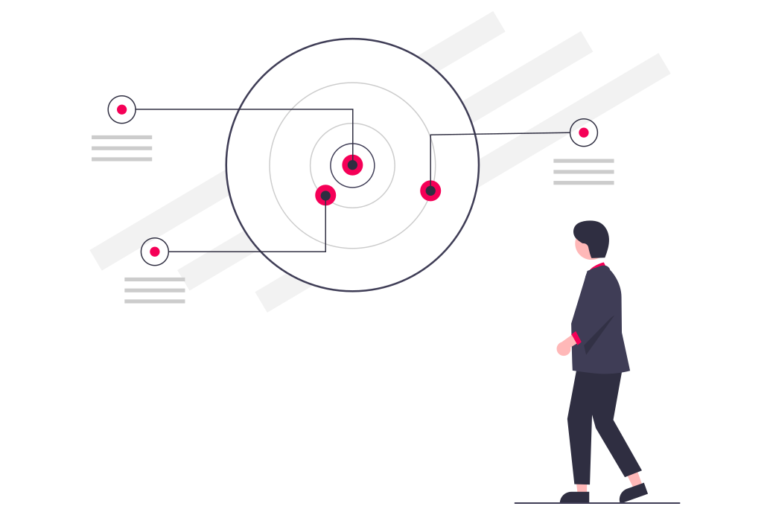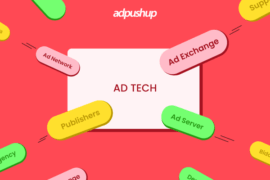With the phasing out of third party data just around the corner, it has led publishers and marketers to activate first party data (also called 1p data) to claim the stage.
First party data activation has taken priority for publishers and marketers due to its potential to not only render highest ROIs but also strengthen the brand loyalty, customer’s relationship with the website.
As it is the first hand data, freshly collected by the companies and publishers, providing the most authentic details for further responding appropriately to customer needs, wants and contextual relevance owing to accurate and precise data. Thus, it is the treasure house for the established brands and new buds in the market.
Given the impending restrictions on usage of third party data or cookies, it should not come as a shocker that 72% of advertisers are likely to devise strategies for first part data activation in 2022.
Before diving into new ways for publishers to activate first part data, let’s understand what 1P data is and other user data types:
Read more:
1. What are the Types of Cookieless Data for Publishers
2. Web Browser Cookies: How are Different Browsers Handling Them?
Other types of user data
1. Zero party data
In the marketing world, ‘data’ is the fuel!
Yet one data type that has been overshadowed is Zero Party Data. Unlike third party data that emphasises on collecting data covertly, that is, without directly getting customer’s consent, Zero Party data, as per Forrester’s definition,is data “customer intentionally and proactively shares with a brand”.
This data is significant for brands as it is shared by customers willingly which in turn solidifies trust on part of customers and establishes brand loyalty.
How is it collected?
Zero party data involves relatively more engagement by the customer and through interactive funnels, quizzes, surveys, creating more personalised customer experience.
Read more:
1. Zero-Party Data: Overview, Importance, and How to Use it
2. Data Clean Rooms: What Publishers Need to Know
2. First party data
As the name suggests, the first hand and direct information collected by brands or companies from their customers, to be at the disposal of the company is considered first part data or 1P data.
As it is consensually shared with the very first interaction with a brand, company or website, it is the most refined, accurate and authentic source of information owned by marketers and publishers.Not only it rules out any privacy concerns but is also cost effective as the data is available at no cost.
1P data is, therefore, known to be a valuable asset and powerhouse of information, facilitating the prediction of customer’s future buying behaviour resulting in providing contextual ads. Getting hold of first party data is synonymous to acquisition of treasure chest as it deepens engagement with customers, ensures retaining of customers.
Any company or brand, devoid of tools to activate first party data is basically turning blind eye to open money.
How is it collected?
1P data can be collected through DMPs ( data management platforms devoted to integrating data from various offline and online sources). Since it is directly from customers, information given while signing up is also one form of 1P data. Other sources can be CRMs (customer relationship management that administers interactions of customers by analysing copious amounts of information.
Read more:
1. Scaling First-Party Data with Josh Peters, BuzzFeed’s Director of Data Partnerships
2. How First-Party Data Will Drive User Engagement and Revenue in a Post-Cookie World
3. Second party data
Often underestimated, second party data, in layman’s words, is other organisation’s first party data. This data is essentially purchased with direct interaction with said organisation being the only requisite.
Rather than involvement of data aggregators needed to acquire third party data, second party data is collected without any mediator between buyer and the seller who agree on certain terms and conditions prior to sealing the transaction!
It not only enables us to build connections with brands and companies but also ensures procurement of high-quality authentic data. Combining first part data with second party data embellishes companies with deeper insights into customer’s behaviour and improves marketing campaigns.
Read more:
What is Second-Party Data? How Can Publishers Use It?
First-Party vs. Third-Party Cookies: What’s the Difference?
4. Third party data
Third party data, also called trackers, is the data bought from external sources or data aggregators instead of directly purchasing from the company. The data aggregators pay the publishers to acquire their 1P data, further, to be sold as third party data.
However, the downside of this type of data is unreliability of the information. Despite being the most informative data, third party data is fraught with excessive and serious privacy concerns which has led to its impending shut down by 2023.
What’s more, the huge costs involved in obtaining this data has compelled the publishers and marketers to actively hunt for new ways to collect and activate first party data.
Read more:
1. How to Recover from Third-Party Cookie Blocking
2. Google Delays the Phasing-Out of Third-party Cookies Until 2023
Pros of First party data activation:
Access to first hand information is getting hands on the goldmine as it enables precise targeting with the information being reliable and accurate. However, it does not offer much scale due to limited collection by the publisher’s own audience and traffic. Yet, the benefits of activating first part data cannot be overlooked:
- Spot on information
First party data, as mentioned earlier, is collected directly from the customer with their consent, hence, proving this data to be authentic, precise and on-point, allowing marketers to predict customer future patterns. While third party data represents a single point in time , resulting in quality degradation, first party data having high quality and fresh sets the course for better customer experience.
- Negligible privacy concerns
In the era, where “87% of customers believe it is important for companies to safeguard the privacy of their information”, first party data closes the window for any treason of privacy as this data cannot be shared and specifically owned by the companies.
Besides, it is willingly shared by the users who are usually given the outline of the way the information will be used by the marketers as well as publishers.
- Enhanced customer insight and personalised content
First party data is used to particularly gain insight into customer’s online behaviour which is further processed to offer personalised content or ads.
For example:
A company can analyse the movement of customers across the website (including purchase history, offline brand interactions) viewing the product, say, clothes and show the targeted ads about shoes to create a more personalised customer experience.
- Better customer segmentation
1P data is beneficial in building better customer profiles and eventually responsible for better segmentation. First party data segmentation elucidates the division of customers with similar purchase histories, time zones and catering to their needs accordingly. As a marketer, it also reveals the most faithful and integral customers to be retained.
Use cases of first party data activation:
Gathering data is of no use if ways to activate it to leverage your website are not clear. Therefore, integrating from all sources at one place is necessary to understand the entire buyer’s journey and improve marketing performance. Below are user cases of first party data:
- Personalizing marketing and automation
First part data gives marketing campaigns a more personalized touch by reviewing user’s interactions with websites. The tool that usually collects the customer information from all channels is CDP (Customer Data Platform). This platform facilitates automated marketing based on first Party information.
- Monitoring customer’s journey
Collecting and unifying first party data help to keep watch on buyer’s behaviour and understanding their journey to conversion, thus, providing the right message at the right time and place, to keep the customers coming back to the website.
Challenges to first party data activation:
Despite having numerous benefits, 1P data utilisation is fraught with challenges.
- Lack of data strategy
Merely gathering 1P data and stashing in data silos does not mean companies are well equipped with the right ecosystem to activate it. Lack of technology to leverage 1P data is one big hurdle for data driven businesses. A clear 1P data strategy is a must-have prior to unlocking the potential of first party data.
- Integration of data
First party data is often stored all over the place:
- Analytics’ SaaS platforms
- Sale’s CRM tools
- Customer support’s ticketing system
Gathering data from these data silos at one place can be arduous when these channels are not even connected to begin with.
- Customer profiling
Customer interaction with brands is usually through multiple channels, creating various profiles as they continuously jump from one channel to another. Merging these profiles into one-views of each customer can be overwhelming. Optimising customer profiling and segmentation can unleash the power of 1P data and help in getting across the right message to customers at the right time. However, creating one profile can be a herculean task.
- Real time action to leverage first part data
Despite being an authentic and reliable source of information to create relevant and personalised ads, 1P data has a tendency to degrade quickly unless immediately distributed to the media execution team.
How to Activate first party data:
- Leveraging an analytics platform
Analytics platform centralises all data and helps in building a single source of refined, segmented information, eventually driving the growth of the brand.
- Programmatic auction
1P data can be activated, keeping user privacy and autonomy at centre,by enabling publishers to share PPIDs – publisher provided identifiers with Google programmatic demand. These before being shared with Google programmatic demand, are turned by Ad manager in per publisher partitioned identifiers to ensure user privacy on other websites. Further, post being aggregated, audience segments are formed. Owing to these segments, advertisers can deliver relevant ads on publisher’s sites.
- Using 1P data via RFM analysis
Leveraging first party data via RFM (recency, frequency, monetary) analysis can be an effective parameter through which customer’s value and engagement over the time can be measured. An RFM backed first part strategy can supplement the efforts to retain HVC (high value customers).
How to use first party data for budding business?
A strong foundation is a prerequisite for the success of any data driven business. Following is the outline of activating first part data to begin new businesses:
- Creating an outline of first party data activation
First party data means the first interaction of a user with the brand. Creating an ecosystem where the data is sorted and integrated into one is paramount for achieving goals of customer loyalty and retention.
- Determining Appropriate data sources and points
Identifying the places where the data has originated from and integrating it according to requirements of marketing can help in catering to publisher’s objective of providing relevant ad content to their users without breaching their privacy.
- Over time surveillance
As users hop continuously from one channel to another, significant and rapid changes can be observed in their patterns which need to be under surveillance and integrated at each step for in-depth customer profiling and support for cross channel marketing.
In Closing:
The rave about third party data becoming a thing of the past has shifted the focus of publishers and marketers all across the advertising world to leveraging first party data from all the channels- web, mobile phones, e-mails, stores, so on and so forth.
They are considered the linchpin of data driven marketing strategy, accelerating the revenue growth of the brand, amplifying reach, deepening customer relationship and their interactions with the brand. Leveraging First party data activation will be the new normal in the cookieless world.
FAQs
The term “first-party data” refers to information a company obtains directly from its customers and owns. 1P data (also known as first-party data) is one of the many types of data marketers can use.
You collect first-party data from your audience if you own a digital channel and use it to engage with them. You can make contact and engage with people as they have consented to being contacted.
To summarize, 1st party data is the most reliable and unique source of information. In the case of second party data, it may have less accuracy since it is shared with several co-partners. The third party data is information from an unknown source.

Shubham is a digital marketer with rich experience working in the advertisement technology industry. He has vast experience in the programmatic industry, driving business strategy and scaling functions including but not limited to growth and marketing, Operations, process optimization, and Sales.







